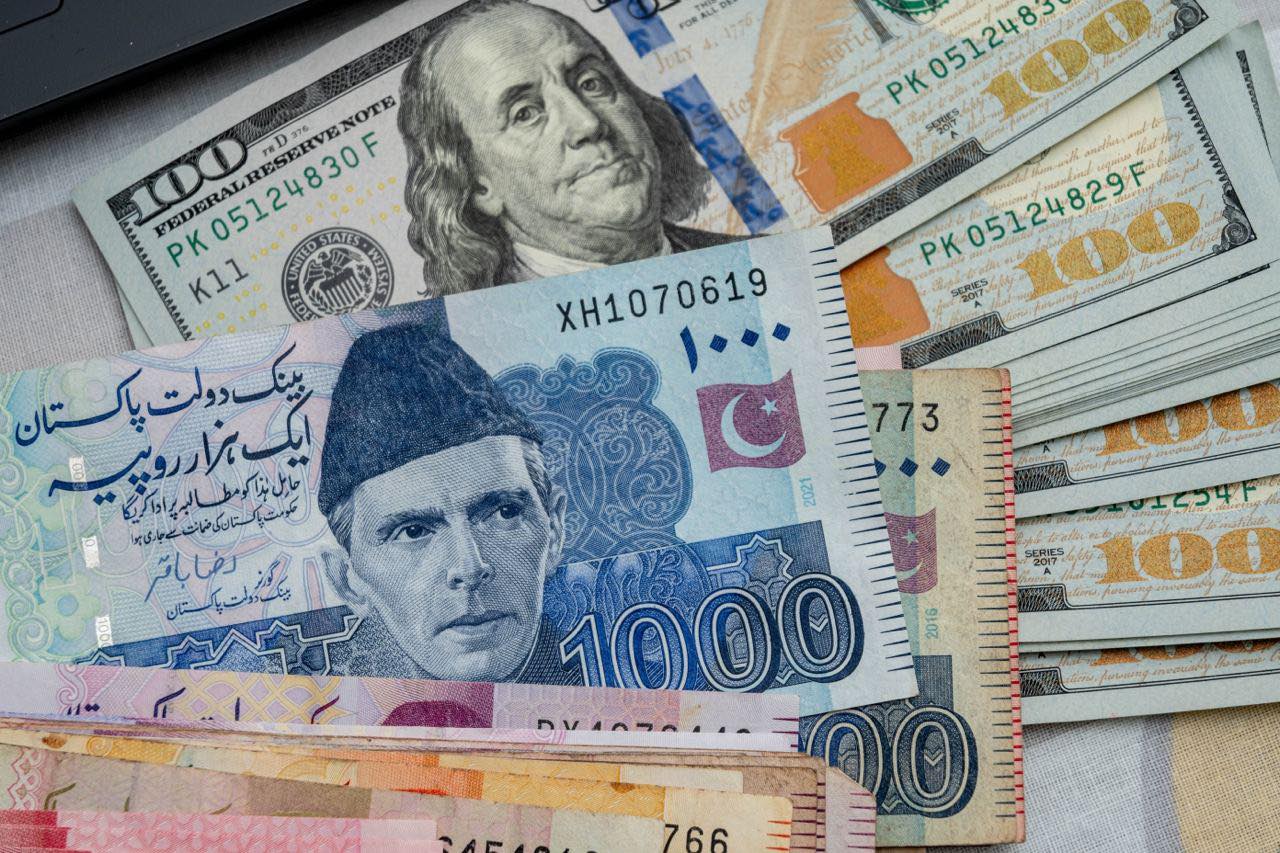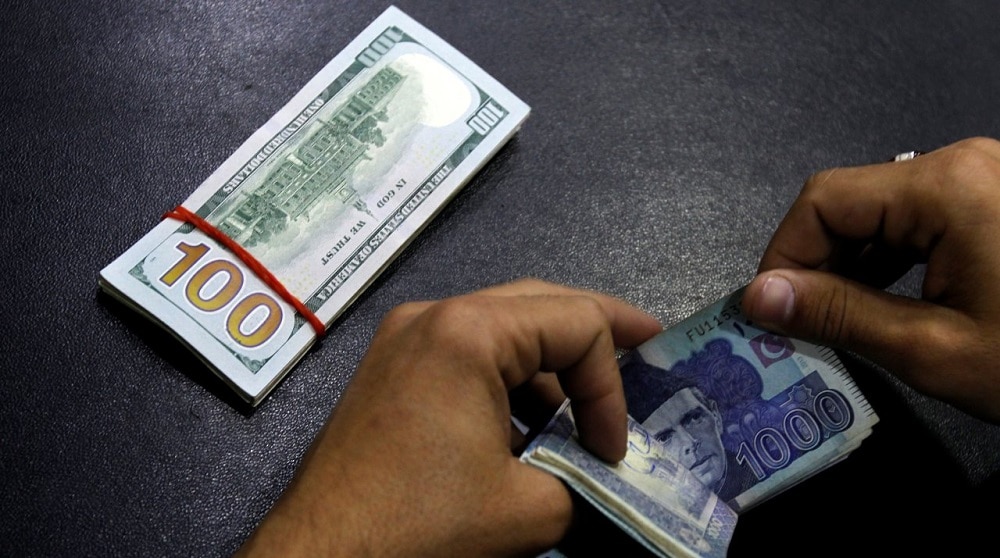PTBP Web Desk
The Pakistani rupee strengthened slightly against the US dollar during early trading on Wednesday, supported by improved sentiment in the foreign exchange market and global developments that weakened the greenback.
At 10:40am, the rupee was trading at 280.92, marking an appreciation of Re0.23 or 0.08% in the inter-bank market compared to the previous day’s close at 281.15.
This marginal gain follows several sessions of stability in the domestic currency market, where the State Bank of Pakistan (SBP) has been managing liquidity to stabilize exchange rate fluctuations.
The rupee’s appreciation coincided with a period of global US dollar weakness, triggered by comments from Federal Reserve Chair Jerome Powell suggesting that an interest rate cut could be on the horizon.
The remarks encouraged traders to reduce their exposure to the dollar, leading to gains for several global currencies, including the Japanese yen, Swiss franc, and the euro.
“The US dollar came under pressure as markets increased bets that the Federal Reserve could begin easing rates as soon as this month,” said a currency market analyst.
The dollar index, which measures the greenback’s performance against a basket of six major currencies, was recorded at 99.055 at 0011 GMT, remaining flat after a 0.2% decline in the previous session.
The Japanese yen traded at 151.80 per dollar, showing little change after gaining 0.3% on Tuesday. Similarly, the Swiss franc was steady at 0.8013 per dollar after a 0.3% overnight increase. The euro, on the other hand, remained firm at $1.1606, maintaining the 0.3% gain from the previous day.
The greenback’s weakness came amid mounting trade tensions between Washington and Beijing, as both sides exchanged new tariff threats. Additionally, the French government’s proposal to suspend pension reforms also bolstered investor confidence in the euro, contributing to its strength against the dollar.
(External Link Suggestion: Link to Reuters Currency Report for broader global market updates.)
Investors closely monitored Powell’s remarks made on Tuesday, which hinted that the Federal Reserve may consider cutting rates during its upcoming policy meeting on October 28–29.
Powell explained that while official economic data releases have been delayed due to the US government shutdown, the central bank still possesses sufficient private-sector data to assess the economy’s performance.
He noted that the labor market remains stagnant, characterized by low hiring and low firing, suggesting that the US economy may require monetary easing to maintain growth momentum.
According to LSEG data, markets are now pricing in a quarter-point rate cut in October, followed by another in December, with projections for three additional cuts in 2026.
The shift in expectations has caused traders to rebalance their portfolios, favoring emerging market currencies, including the Pakistani rupee, which often benefit from lower US interest rates.
(Internal Link Suggestion: Link “emerging market currencies” to your article on Pakistan’s forex trends or SBP interventions.)
Oil prices — a key factor influencing currency parity for import-dependent economies like Pakistan — fell for the second consecutive session on Wednesday.
Brent crude futures declined by 21 cents (0.3%) to $62.18 per barrel by 0425 GMT, while US West Texas Intermediate (WTI) slipped 16 cents (0.3%) to $58.54 per barrel.
The decline followed a warning from the International Energy Agency (IEA), which projected a global oil supply surplus by 2026. Additionally, escalating US-China trade tensions could further reduce demand, putting downward pressure on global energy prices.
For Pakistan, lower oil prices generally help contain import costs, improve the current account balance, and reduce inflationary pressures — all of which support the rupee’s relative stability.
However, analysts caution that any sharp fluctuations in global crude prices or delays in IMF-related inflows could trigger volatility in the currency market in the coming weeks.
Currency experts suggest that the rupee’s near-term performance will depend largely on external inflows, remittances, and foreign investment trends. The expectation of a Federal Reserve rate cut could provide temporary relief for developing economies, including Pakistan, by easing pressure on dollar-denominated debt and attracting short-term capital.
Despite the minor appreciation, the State Bank of Pakistan is expected to maintain a cautious approach to ensure that exchange rate movements align with macroeconomic fundamentals.
“The rupee’s current strength reflects a mix of global market sentiment and controlled domestic liquidity,” said one market observer. “However, sustained gains will require improved export performance and continued fiscal discipline.”




